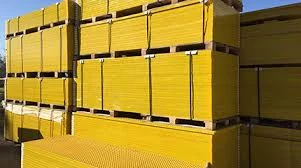
-
 Afrikaans
Afrikaans -
 Albanian
Albanian -
 Amharic
Amharic -
 Arabic
Arabic -
 Armenian
Armenian -
 Azerbaijani
Azerbaijani -
 Basque
Basque -
 Belarusian
Belarusian -
 Bengali
Bengali -
 Bosnian
Bosnian -
 Bulgarian
Bulgarian -
 Catalan
Catalan -
 Cebuano
Cebuano -
 China
China -
 China (Taiwan)
China (Taiwan) -
 Corsican
Corsican -
 Croatian
Croatian -
 Czech
Czech -
 Danish
Danish -
 Dutch
Dutch -
 English
English -
 Esperanto
Esperanto -
 Estonian
Estonian -
 Finnish
Finnish -
 French
French -
 Frisian
Frisian -
 Galician
Galician -
 Georgian
Georgian -
 German
German -
 Greek
Greek -
 Gujarati
Gujarati -
 Haitian Creole
Haitian Creole -
 hausa
hausa -
 hawaiian
hawaiian -
 Hebrew
Hebrew -
 Hindi
Hindi -
 Miao
Miao -
 Hungarian
Hungarian -
 Icelandic
Icelandic -
 igbo
igbo -
 Indonesian
Indonesian -
 irish
irish -
 Italian
Italian -
 Japanese
Japanese -
 Javanese
Javanese -
 Kannada
Kannada -
 kazakh
kazakh -
 Khmer
Khmer -
 Rwandese
Rwandese -
 Korean
Korean -
 Kurdish
Kurdish -
 Kyrgyz
Kyrgyz -
 Lao
Lao -
 Latin
Latin -
 Latvian
Latvian -
 Lithuanian
Lithuanian -
 Luxembourgish
Luxembourgish -
 Macedonian
Macedonian -
 Malgashi
Malgashi -
 Malay
Malay -
 Malayalam
Malayalam -
 Maltese
Maltese -
 Maori
Maori -
 Marathi
Marathi -
 Mongolian
Mongolian -
 Myanmar
Myanmar -
 Nepali
Nepali -
 Norwegian
Norwegian -
 Norwegian
Norwegian -
 Occitan
Occitan -
 Pashto
Pashto -
 Persian
Persian -
 Polish
Polish -
 Portuguese
Portuguese -
 Punjabi
Punjabi -
 Romanian
Romanian -
 Russian
Russian -
 Samoan
Samoan -
 Scottish Gaelic
Scottish Gaelic -
 Serbian
Serbian -
 Sesotho
Sesotho -
 Shona
Shona -
 Sindhi
Sindhi -
 Sinhala
Sinhala -
 Slovak
Slovak -
 Slovenian
Slovenian -
 Somali
Somali -
 Spanish
Spanish -
 Sundanese
Sundanese -
 Swahili
Swahili -
 Swedish
Swedish -
 Tagalog
Tagalog -
 Tajik
Tajik -
 Tamil
Tamil -
 Tatar
Tatar -
 Telugu
Telugu -
 Thai
Thai -
 Turkish
Turkish -
 Turkmen
Turkmen -
 Ukrainian
Ukrainian -
 Urdu
Urdu -
 Uighur
Uighur -
 Uzbek
Uzbek -
 Vietnamese
Vietnamese -
 Welsh
Welsh -
 Bantu
Bantu -
 Yiddish
Yiddish -
 Yoruba
Yoruba -
 Zulu
Zulu
fiberglass step
The use of fiberglass has become increasingly popular in various industries, especially when it comes to the production of step ladders, walkways, and scaffolding systems. Fiberglass, a composite material made from fine glass fibers and resin, has a multitude of advantages that make it ideal for these applications. This article will explore the benefits and uses of fiberglass in the context of steps and ladders, as well as its impact on safety and efficiency.
One of the primary advantages of fiberglass is its lightweight nature. Compared to traditional materials such as wood or metal, fiberglass is significantly lighter, making it easier to transport and maneuver. This weight advantage is particularly beneficial when dealing with large ladders or scaffolding setups, as workers can carry and reposition them without excessive strain or risk of injury. The lightweight quality of fiberglass does not compromise its strength; in fact, it boasts an impressive strength-to-weight ratio that allows it to withstand heavy loads and harsh conditions.
Another significant benefit of fiberglass steps and ladders is their resistance to corrosion and rust. Unlike metal, which can deteriorate over time when exposed to moisture or chemicals, fiberglass maintains its integrity in a variety of environments. This property is particularly valuable for outdoor applications, where exposure to the elements can lead to degradation of traditional materials. Furthermore, fiberglass is non-conductive, making it a safe choice for electricians and those working near live wires.
Safety is a major concern in any industry that requires the use of ladders or elevated platforms. Fiberglass steps offer superior traction, as they are often designed with textured surfaces that minimize the risk of slipping. This feature ensures that workers can maintain their footing even in wet conditions, reducing the incidence of accidents and injuries on the job. Moreover, the stability of fiberglass structures helps provide a secure working platform, boosting worker confidence while performing tasks at heights.
fiberglass step

In terms of maintenance, fiberglass steps and ladders are relatively low-maintenance compared to their wooden or metal counterparts. They do not require regular painting or sealing, and cleaning them is as simple as wiping down the surface with a damp cloth. This ease of maintenance leads to long-term cost savings, as companies can reduce the time and resources devoted to upkeep.
The versatility of fiberglass makes it suitable for a wide range of applications beyond just ladders and steps. It is commonly used in the construction of scaffolding systems, platforms, and even in residential settings where custom staircases are needed. Fiberglass can be molded into various shapes and sizes, allowing for design flexibility that meets specific project requirements. This adaptability is particularly appealing in both commercial and industrial settings, where the demands of the workspace can vary greatly.
In conclusion, fiberglass has revolutionized the way we approach the design and construction of steps and ladders. Its lightweight, corrosion-resistant properties, combined with enhanced safety features and low maintenance requirements, make it an excellent choice for various applications. As industries continue to seek innovative solutions for their operational needs, the use of fiberglass in step production will undoubtedly play a crucial role in enhancing safety, efficiency, and overall performance. As technology advances, we can expect even more breakthroughs in the development of fiberglass products, further solidifying its place as a trusted material in the modern world.
Latest news
-
Exploring the Benefits of Top Hammer Drifter Rods for Enhanced Drilling PerformanceNewsJun.10,2025
-
High-Precision Fiberglass Winding Machine for GRP/FRP Pipe Production – Reliable & Efficient SolutionsNewsJun.10,2025
-
FRP Pipes & Fittings for Shipbuilding - Corrosion-Resistant & LightweightNewsJun.09,2025
-
Premium FRP Flooring Solutions Durable & Slip-ResistantNewsJun.09,2025
-
Premium Fiberglass Rectangular Tanks Durable & Lightweight SolutionNewsJun.09,2025
-
Tapered Drill String Design Guide Durable Performance & UsesNewsJun.09,2025









